Authors:
ABSTRACT
Aim
Powered or manual toothbrushes are daily-used instrument in the Western area for the control and removal of bacterial
biofilm. Among powered-toothbrushes, sonic technology has shown to produce fluid turbulent activity that might assist in plaque
removal; however, limited knowledge is available in-vivo. The objectives of this study were to compare the plaque removal efficacy of
two different toothbrushes in a population not familiar with sonic technology, and to collect and analyse data regarding oral hygiene
habits. The null-hypothesis was that a sonic toothbrush is able to remove a superior amount of plaque compared to the manual type.
Methods
Forty young adult patients were enrolled in the study. A single-cohort crossover clinical trial was
designed. For each patient, three appointments were scheduled: the first (T0) was used for oral care education and explanations of
toothbrushes techniques, for a preliminary professional hygiene session, and for delivery of a questionnaire; at one week (T1), plaque
evaluation was performed (Turesky modification of the Quigley and Hein index) at baseline and after asking patients to brush with the
randomly selected manual or sonic device. At the last appointment (week 3, T2), the same plaque evaluations of T1 were repeated
asking patients to brush with the other toothbrush. Entire mouth indexes were calculated and mean reductions in whole mouth plaque
scores were obtained (pre-brushing minus post-brushing values) for the two tested toothbrushes. Multiple ANOVA tests (p
0.05 ) were used 1) to compare plaque levels between male and female subjects at baseline and post-brushing, regardless the type of
toothbrush, and 2) to differentiate between mean reductions in whole mouth plaque scores according to the type of toothbrush (manual
versus sonic). The study population was subjected to descriptive statistical analysis; potential relationships between socio-demographic
variables and obtained plaque scores were evaluated (Mann-Whitney and Kruskal-Wallis tests).
Results
Full-mouth plaque levels
were reduced at post-brushing sessions, regardless the device, by approximately 62 (p<0.0001). Mean plaque index
reductions for manual and sonic toothbrush were of 1.05 0.22 and 1.19 0.37, respectively. A statistically significant
difference was found between the two devices (p 0.0342). The powered sonic toothbrush removed about 10 more
plaque than the manual type. From the collected questionnaire financial data, willingness to pay (WTP) values expressing economic
efforts of patients for the purchase of toothbrushes were of Euros 4.83 3.86 and of Euros 54.75 36, for the manual and sonic
devices, respectively.
Conclusion
Within the limitations of the study, in subjects without any previous experience of a similar
technology, the single use of the sonic toothbrush showed a significantly greater plaque reduction compared to the manual traditional
toothbrush (null-hypothesis accepted).
PLUMX METRICS
Publication date:
Keywords:
Issue:
Vol.16 – n.1/2015
Page:
Publisher:
Cite:
Harvard: D. Re, G. Augusti, D. Battaglia, A. B. Giann, D. Augusti (2015) "Is a new sonic toothbrush more effective in plaque removal than a manual toothbrush?", European Journal of Paediatric Dentistry, 16(1), pp13-18. doi: https://www.ejpd.eu/pdf/EJPD_2015_1_2.pdf
Copyright (c) 2021 Ariesdue

This work is licensed under a Creative Commons Attribution-NonCommercial 4.0 International License.
